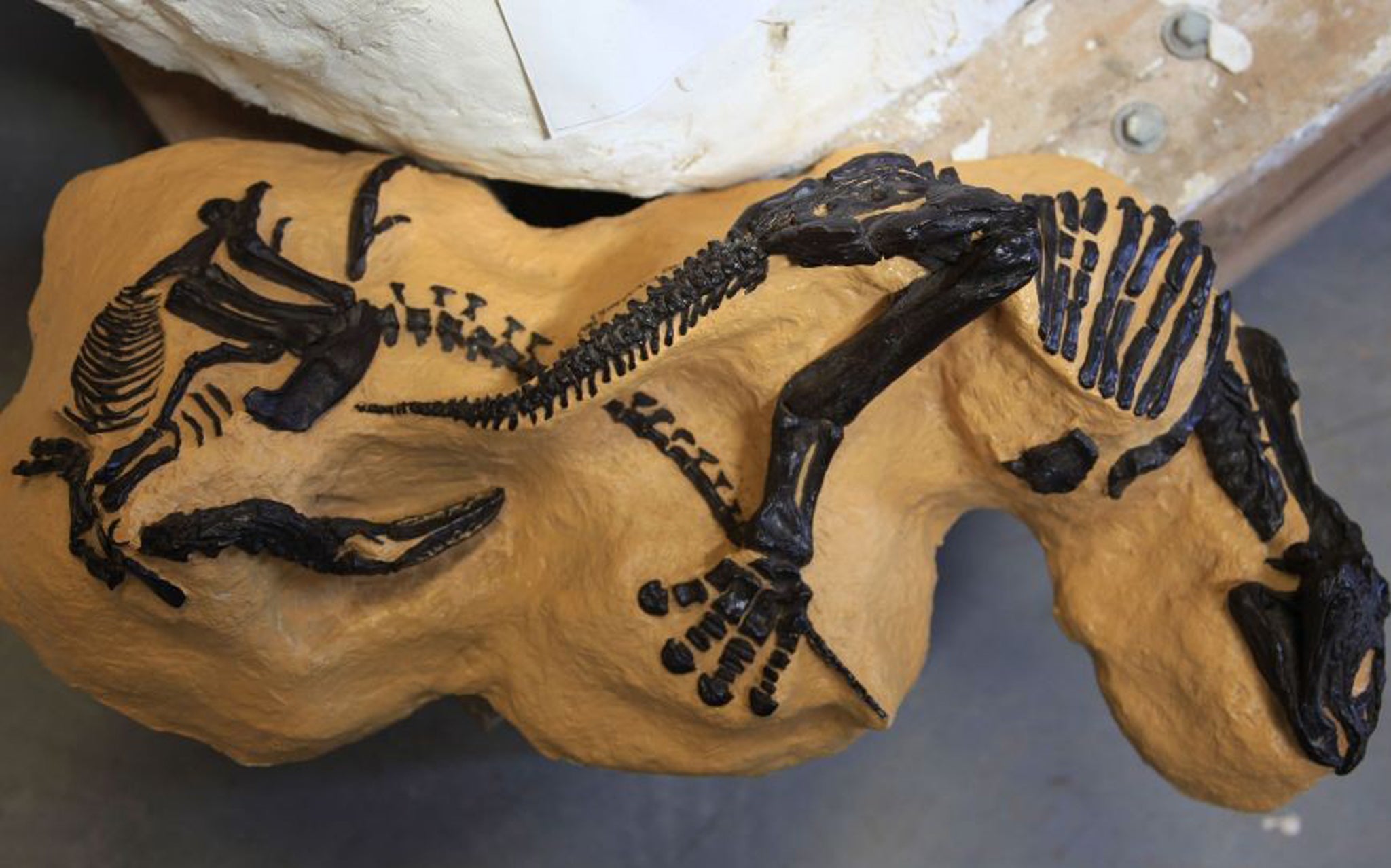Mortal combat: Unique duelling dinosaur fossil could be lost to science when it is auctioned for up to £6m
Researchers fear the unique £4.5m find could be lost to science unless sold to a museum

Your support helps us to tell the story
From reproductive rights to climate change to Big Tech, The Independent is on the ground when the story is developing. Whether it's investigating the financials of Elon Musk's pro-Trump PAC or producing our latest documentary, 'The A Word', which shines a light on the American women fighting for reproductive rights, we know how important it is to parse out the facts from the messaging.
At such a critical moment in US history, we need reporters on the ground. Your donation allows us to keep sending journalists to speak to both sides of the story.
The Independent is trusted by Americans across the entire political spectrum. And unlike many other quality news outlets, we choose not to lock Americans out of our reporting and analysis with paywalls. We believe quality journalism should be available to everyone, paid for by those who can afford it.
Your support makes all the difference.One of the rarest and most expensive dinosaur fossils, comprising a pair of dueling dinosaurs that died in mortal combat some 67 million years ago, could be lost to science when it is auctioned for private sale in November, scientists warned today.
The well-preserved fossil includes the only remains of a new species of predatory dinosaur, which scientists have only just identified, as well as a large, lumbering herbivore which also died when the two creatures were locked together in a fearsome fight.
Bonham’s, the London auction house, is to put the fossil on sale in New York this November and scientists said that it could be lost for future generations of researchers if, as expected, the fossil is sold to a private collector for the expected fee of between $7m (£4.5m) and $9m.
“They are coming out of the ground and they are on the market. Its survival does not depend on a scientist giving a description, it’s based on whether or not the auctioneer’s gavel is going to sell this to a museum where we can access it and complete the story,” said Philip Manning of the University of Manchester.
“If it goes to a private collection, I will have to unlearn what I have seen... It’s important for it to become available to a museum so that we can study it,” Dr Manning told the British Science Festival in Newcastle.
It was originally thought the the predator, named Nanotyrannus lancensis, was a juvenile Tyrannosaurus Rex, the largest land predator to have ever lived. However a re-analysis of the skeleton has shown it to be a distinct species of smaller predator, making the fossil even more important to science, Dr Manning said.
The herbivore has been identified as belonging to the Ceratopsian dinosaurs, which include the three-horned Triceratops, which may have inflicted a lethal head wound on its attacker.
The giant fossil was discovered on private land in Montana’s Hell Creek geological formation where many dinosaur bones dating from the same period have been excavated, including T. rex.
It is only the second fossil to preserve the remains of two fighting dinosaurs but this one is bigger and the skeletons of both animals are almost totally preserved, which is makes them so valuable to science, Dr Manning said.
“Being a complete fossil makes it so astoundingly important because it provides so much information on an organism. The only other dueling dinosaur fossils were the size of greyhounds whereas this is two houses having a fight,” he said.
“Some teeth from the jaw of this thing are actually embedded in the neck of the Cerotopsian dinosaur, which kind of indicates that there was some kind of foreplay at the very least,” Dr Manning told the Science Festival.
“Given that one is predator and one is prey I’m pretty confident that these things were not playing...It was a bad day for both of them. If you’re cornered by a top predator you will do anything not to be eaten,” he said.
“In the African savannah today the lions are taking down the big prey and the cheetahs are taking down the smaller prey. Maybe we are looking at the cheetah of the Cretaceous here some 65 to 67 million years ago,” he added.
“Hopefully the scientific significance of this stunning fossil will not be overlooked amidst the media interest of the sale. This fossil would make the centrepiece of any museum and really deserves a very public home,” Dr Manning said.
Join our commenting forum
Join thought-provoking conversations, follow other Independent readers and see their replies
Comments